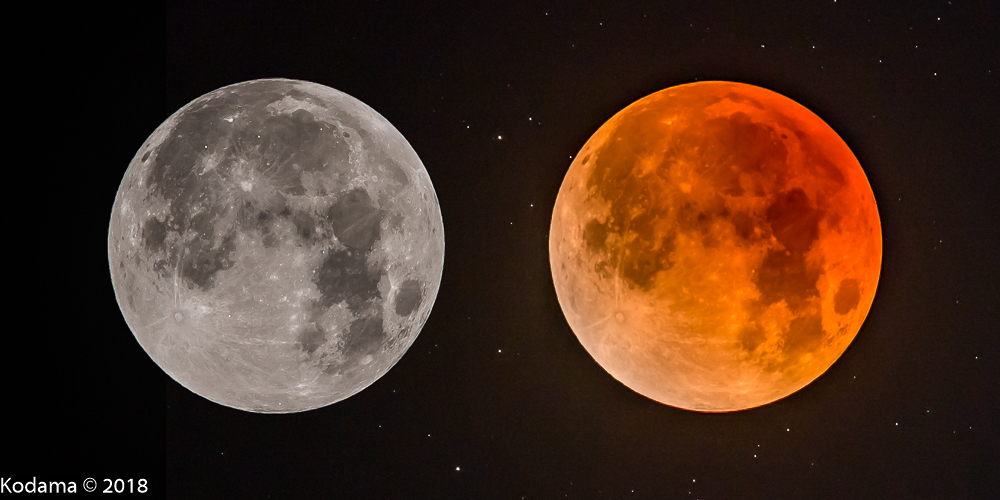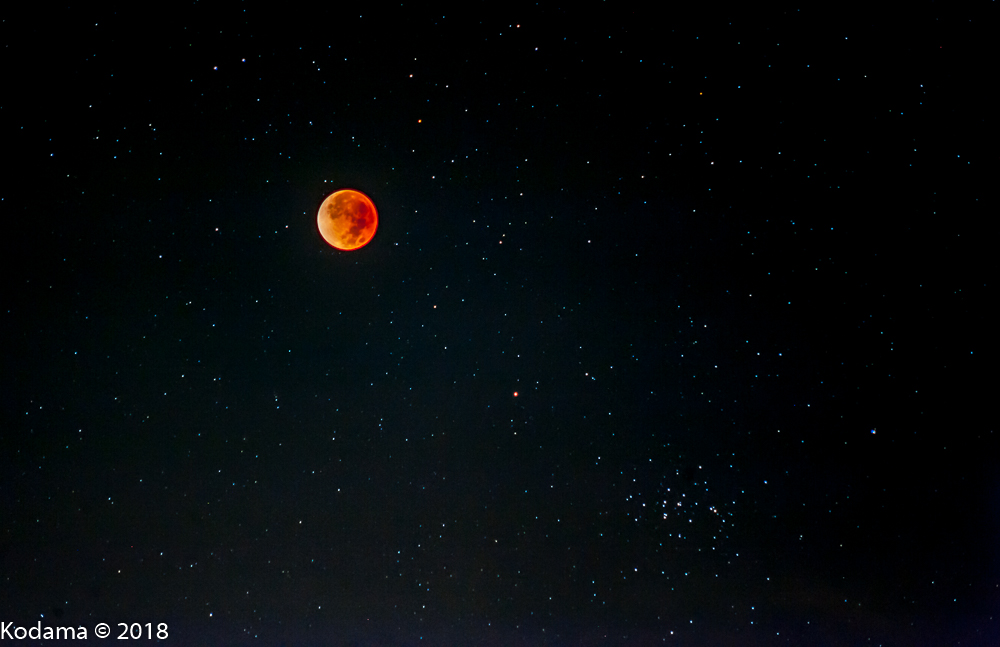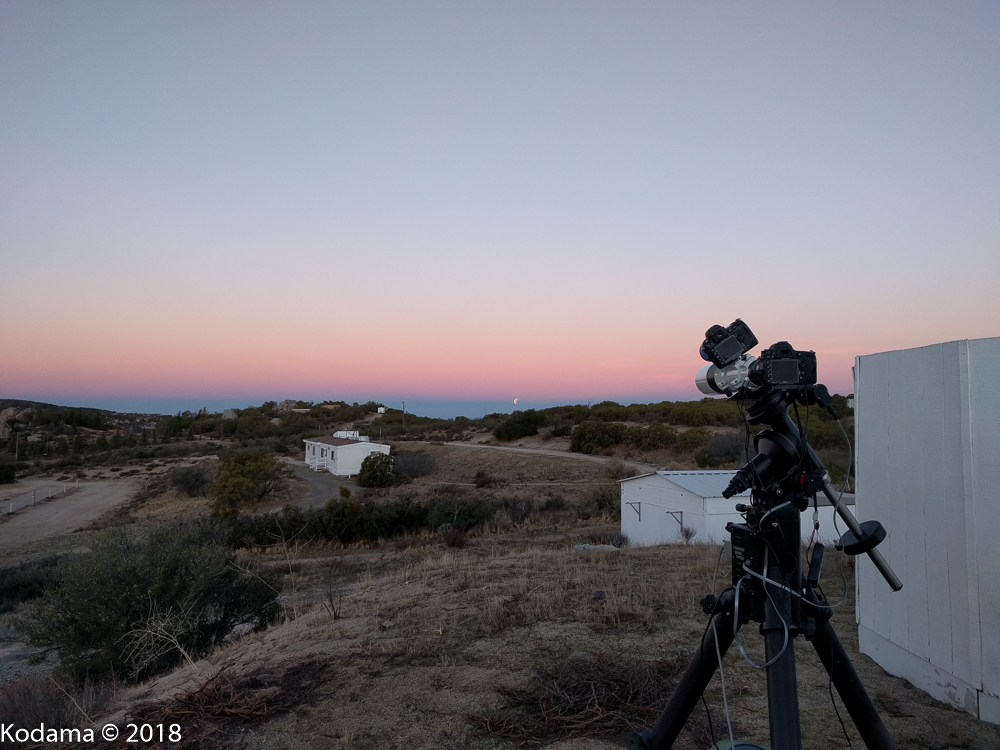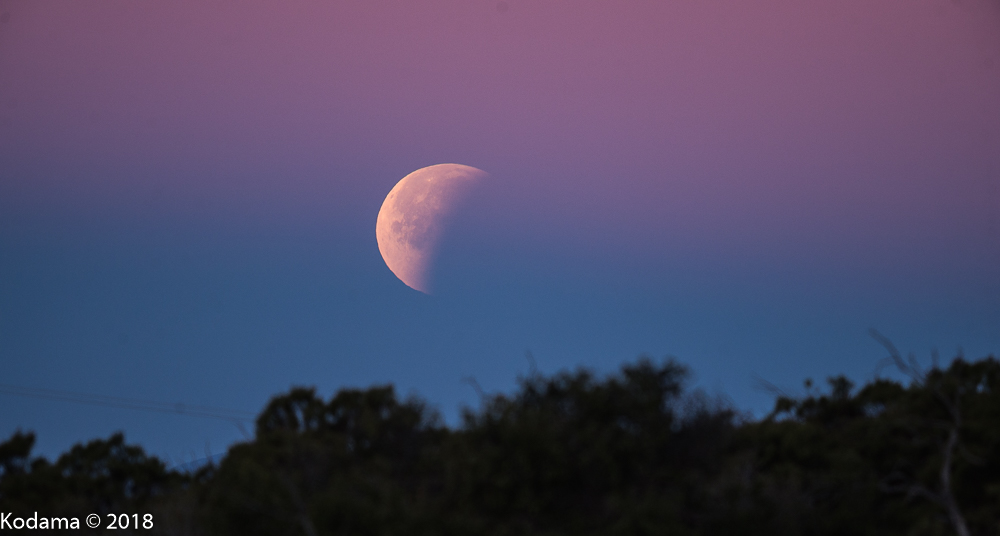
|

|
Lunar Eclipse
|
This lunar eclipse was described by several names in the popular press - Blue Moon, Blood Moon, Super Moon. The Blue Moon refers to the fact that this is the second of two full moons this month. The Blood Moon refers to the color of the moon in a total lunar eclipse. And Super Moon refers the large apparent size of the moon due to the closeness of the moon to the earth (perigee) in its elliptical orbit.
For those of us who viewed it from the Anza site of the Orange County Astronomers, the afternoon and early evening looked discouraging with a sky full of clouds. But the weatherman was accurate this time, and the clouds cleared out for a nice view of the lunar eclipse in the early morning hours. Additional bonuses were a small jolt from a magnitude 2.6 earthquake with epicenter about 4 miles away, and a nice bright meteor seen (but not photographed) near the moon as totality approached. Totality ended just before sunrise so we were also treated to a still partially eclipsed moon setting against the earth shadow and Belt of Venus.


At sunrise, the still partially eclipsed setting moon could be seen along with the earth shadow (dark blue) and "Belt of Venus" (reddish glow above the shadow) just before sunrise. Both the shadow and Belt of Venus are local atmospheric effects visible in the direction away from the sun, which is just below the horizon (i.e. just before sunrise). Normally the moon will be seen fully illuminated, but in this case, the moon was still partially eclipsed, so it appears as a crescent.


